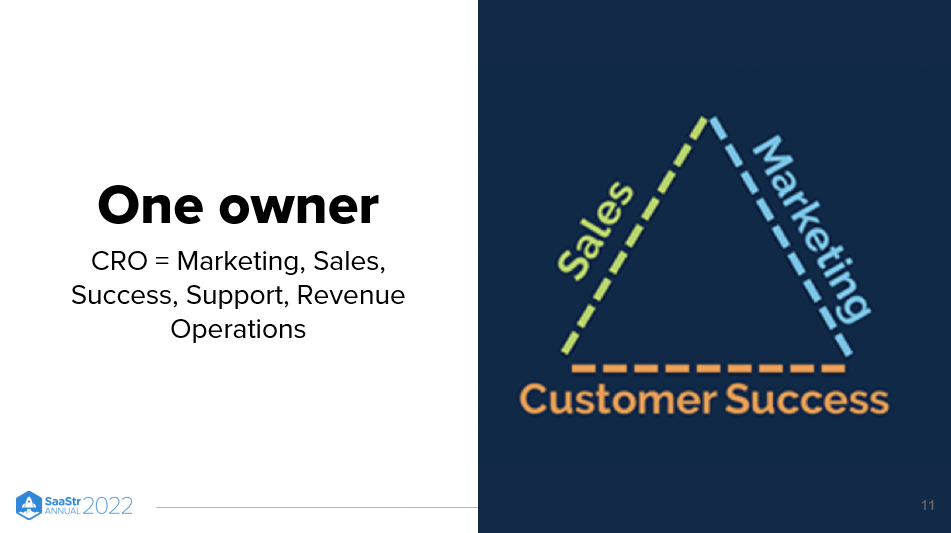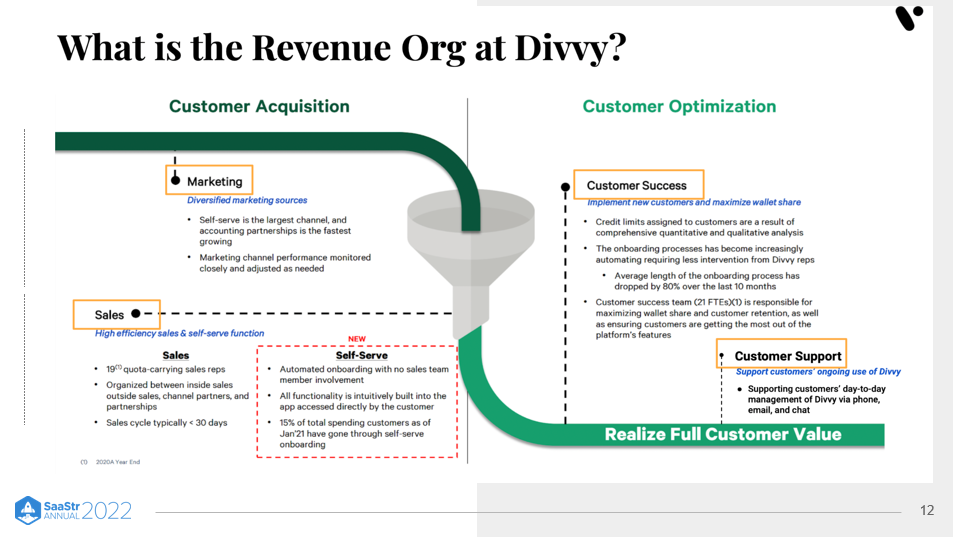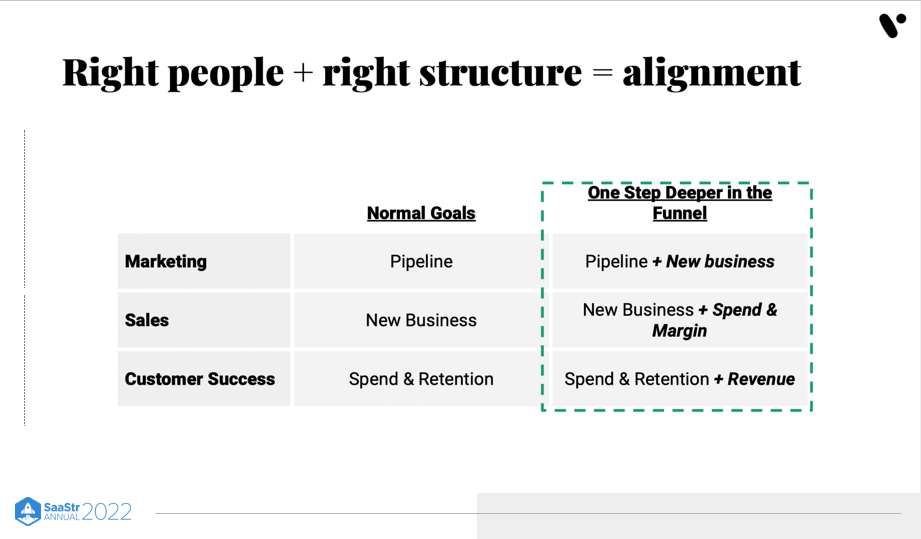In many companies, the longtime dispute between sales and marketing prevents them from collaborating or agreeing on a goal. Divvy’s CRO, Sterling Snow, created a structure aligning these two teams with others to create a formidable revenue team. This structure drove the company to a $2.5 billion-dollar acquisition by Bill within five years.
In this episode, Snow shares the journey to realizing the strength of revenue alignment through sales, marketing, and customer success and the principles for implementing this structure to yield tremendous results.
Building a unified revenue team
Divvy’s revenue organization sustains the go-to-market engine responsible for its hypergrowth. Snow’s conviction to implement this strategy came from his previous role, where he noticed an improvement in the workflow after the management merged the sales and marketing teams.
When these areas come together as a single team, everyone should begin seeing themselves as one, pushing towards the same goal, and taking collective responsibility for the company’s wins and failures.
“Hold yourself accountable to how well the go-to-market engine is working across the whole team.”
Principle 1: Create the right structure
The right structure starts with having one person as the head of the entire revenue organization. This person oversees the operations of all the teams under this umbrella and ensures they are all heading in one direction. The head of revenue has the responsibility for the entire funnel: marketing, sales, implementation, customer success, customer support, and revenue operations.
With everyone under a single lead, there should be no need for finger-pointing as there will be one point of review for the revenue organization. In essence, the failure of one will be seen as the failure of all.

Principle 2: Make sure everyone carries a quota
Every department should have a number or KPI they are accountable for.
This involves highlighting the impact of each department’s duty as a monetary value, and not just as a metric they’ll be measured against, or a regular checklist they have to tick.
Doing this helps them see their role in the revenue-generating flow of the company. Like displaying their monetary impact in a pie chart, and allocating different percentages to different teams. It puts the right type of pressure on them to be more efficient, and better accountable for the part they play.
In addition, the clarity this brings eliminates conflict since there will be no undue interference. So, if the company falls short of their revenue target, it’s easy to know where the issue is coming from and how it can be rectified.
“You have to have clarity about which part of the relay race you’re holding the baton and which part you’re passing off.”
Principle 3: Measure and compensate metrics one step deeper in the funnel
Holding everyone to a standard helps the team stay cohesive since they have an extra objective to tackle that is tied to other parts of the revenue funnel. This deeper objective should be intertwined with the responsibility of another department.
“Everybody has to understand everybody else’s goals at all times.”
For instance, while marketing is responsible for keeping the pipeline flowing with leads, you can also have them keep track of the closing rate. Ideally, it’s the function of sales to close new business; but marketing now has a new obligation to check in with sales to be sure the goal of lead generation and closing is being accomplished.
All of these contribute to the revenue funnel, but the two teams share the responsibility of making it happen. You will have marketing performing its role and ensuring its efforts are not wasted. On the other hand, the sales team is doing their job while collaborating with marketing on better ways to relate with prospects and attract them. This kind of teamwork is a clear win for the entire organization.

Principle 4: Make the north star crystal clear
While the revenue organization may be doing the chunk of the work in keeping the company profitable, they can’t work in isolation from other teams. All employees should know that their role ties to one primary goal, and work towards it either by collaborating more, or by prioritizing tasks that matter. This is in line with the goal of ensuring internal unity in the company.
The north star can be added to every presentation and meeting, to ensure it is ingrained in the minds of every employee. Skipping this seemingly obvious step can leave some people in the dark about the company’s ultimate goal. It also makes the work easier as there’ll be less guesswork when it comes to decision making and distractions from irrelevant issues.
Benefits of a unified revenue team
Implementing the above principles for creating this kind of structured revenue organization in your company can bring the following outcomes:
- Attract the real A players. The star talents in your company will be more motivated to give their best as they have the right environment to work well with others in the absence of internal friction.
- Energize everyone with a common goal. Seeing the positive returns from one’s efforts gives employees the validation they need to keep pushing toward the ultimate goal.
- See and fix mistakes before they snowball. You can nip issues in the bud before they escalate by having a higher-level view of what goes on in your money-generating departments.
- Grow faster and out-execute the competition. Since this system primes everyone for action, energy is channeled to activities that move the needle. Especially since the SaaS space is already oversaturated, your company’s superpower becomes speed and quality of delivery.
Key takeaway
Keeping everyone focused on your company’s goal of generating revenue is possible, but it requires the right structure and organization. Building a unified revenue team will help eliminate conflicts, slow down work, and motivate employees to give their best.
The post Revenue Alignment: How to Pull Marketing, Sales, and Customer Success Together with Divvy CRO Sterling Snow (Pod 628 + Video) appeared first on SaaStr.
via https://www.aiupnow.com
Amelia Ibarra, Khareem Sudlow

